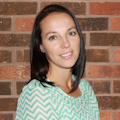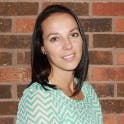Alternative practice settings: Drafting paperwork
Editor’s note: Amy Ericks, RDH, BSDH, is in the process of pursuing a career in collaborative practice outside the dental practice. You can follow her journey beginning here.
I was beyond excited that the South Dakota Board of Dentistry approved my collaborative agreement, and I wished that I could walk in to the facility and start caring for these patients that same day. However, there was more work to be done before I could really begin—paperwork, to be specific. I previously mentioned the information packets that were sent to the residents’ families. I needed this information back prior to seeing anyone for exams or hygiene care.
The information packet
I spent several hours drafting the information packet for this project. I included a letter of introduction and program intent and simple instructions for filling out the forms that I needed returned. I wanted to make the forms simple and concise, so that it would not be an inconvenience for the families to complete them. The information I requested back was basic patient information, insurance information, if any, and responsible party and contact information. I knew that I would be able to access the health information and medication list from the facility, so there was no need to trouble the families with that type of information.
I also included consent forms to be returned: consent for HIPAA, consent for treatment, and acknowledgment that an oral health assessment by a dental hygienist did not take the place of an exam by their general dentist. Among the several hours of drafting paperwork, I also completed an exam and progress notes form as well as a form to be sent to the families with the dental hygiene services recommendation and any immediate needs that would need further treatment with their general dentist.
How it was drafted
The paperwork that was pieced together for this project came from several different sources. I spent some time searching through the internet for examples of HIPAA forms, and examples of progress notes and initial exam paper charts. I borrowed ideas from several different sources and pieced together my own based on what I felt would be most needed. The state board requires that the individual or his or her guardian or power of attorney are informed and aware that the services provided are not intended to be a substitute for regularly visiting a dental home or seeking care in a traditional office; the wording for this consent form I drew directly from the board. This has been a learning experience, as I found that I needed to make adjustments or edits to the paperwork. I found that the initial exam chart was much too complicated, and I needed to simplify it. I also encountered the need to draft a release form for the patient to sign so that I could request information from their dental home, something that I did not anticipate.
Partnership with the facility
Since I received the go-ahead, I have been working closely with one facility staff member who is in charge of scheduling all types of appointments for the residents. Her name is Tammy. She has been invaluable in this process, as she has really stepped up and provided a great deal of effort to get the word out about this service. Most importantly, she can see the long-term benefits of providing such services on-site for the residents. She knows that the majority of them have not been to a dentist in several years due to insurance, physical, or financial limitations. She has been a great asset and team member to have as we get this program going. She is excited, I am excited, and we both have realistic expectations on how this program will progress and the benefits that will be provided.
With approximately 100 residents at the facility, I am hopeful that I can begin providing services for a good percentage of them. I would love to be able to provide care and services to all, regardless of their circumstances. In previous discussions with the administrator at the facility and with Tammy, I was informed that approximately 50% of the residents have Medicaid insurance. The remainder have Medicare, or are private-pay residents.
There was some initial thought of offering hygiene services to residents with Medicaid only, because Medicaid patients have such difficulty in finding a dental office that accepts their insurance. We eventually decided that, regardless of their insurance or financial situations, all residents would benefit from the services that I would be offering. So, the information packets were sent out to all of the families, with the hopes that they will all give the idea some serious thought and see the importance of the opportunity.
Initially, I expected to be off to a slow start, which is fine. This will give me an opportunity to really evaluate the many angles and aspects of this program. I will have time to evaluate my paperwork, my forms, my expectations. I will have time to make adjustments to fit patients’ needs, and adjustments to grow the awareness of what is available. I also hope that the initial slowness will allow me some insight in the best way to advocate for these residents and educate the families and the community. I know that word of mouth is a powerful tool, and I am confident that the program will grow along with the awareness.
I want to take a moment to pause and thank everyone who has been following me on my journey thus far. I hope that you are feeling the excitement and the anticipation that I am experiencing as this process moves forward. I hope that I am planting seeds of thought and inspiration for those that wish to forge ahead into the unknown with their own dreams.
Follow Amy’s journey into collaborative practice:
Part one: ‘I hope to end up in a nursing home’: Dental hygiene career alternatives
Part two: Pursuing collaborative practice 'out of the goodness of your heart'
Part three: The logistics of alternative practice settings: Nursing homes
Part four: The logistics of alternative practice settings: Finding a collaborative dentist
Part five: Patiently waiting: Education with the kids while transitioning in dental hygiene career
Part six: Alternative practice settings: Providing exams in a nursing home
Part seven: Alternative practice settings: Why I got liability insurance
Editor's note: This article first appeared in RDH eVillage. Click here to subscribe.
For the most current dental headlines, click here.
About the Author

Amy Ericks, BSDH, RDH
After 6 years of full-time clinical practice, Amy Ericks, BSDH, RDH, decided to pursue a journey to bring dental hygiene services to a long-term care facility. This often-neglected population has been on her mind for some time, and she is humbled to be able to be making a difference in their care. Here she walks us through her journey as she navigates this exciting new career path, stumbling blocks and all. She is also currently the president-elect of the South Dakota Dental Hygiene Association and is hopeful and encouraged about the impact she may have within her state.


